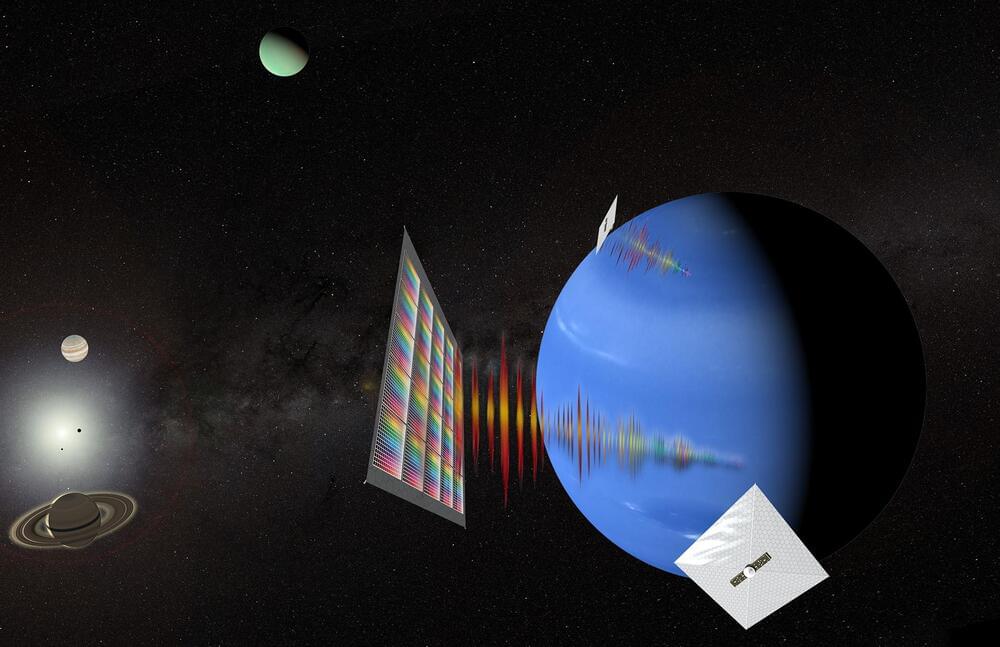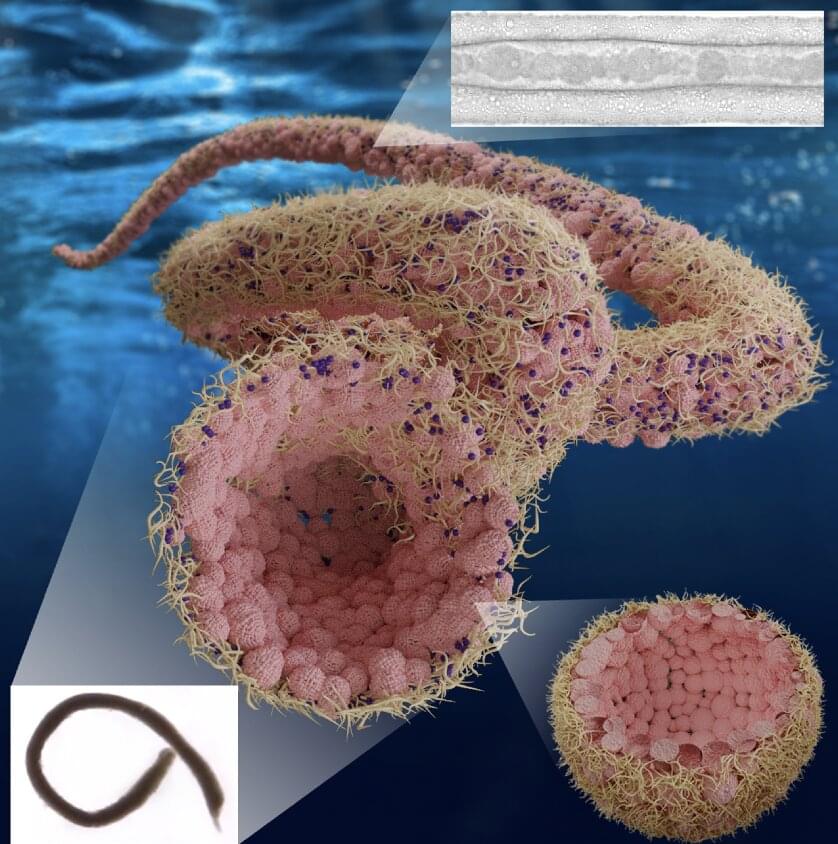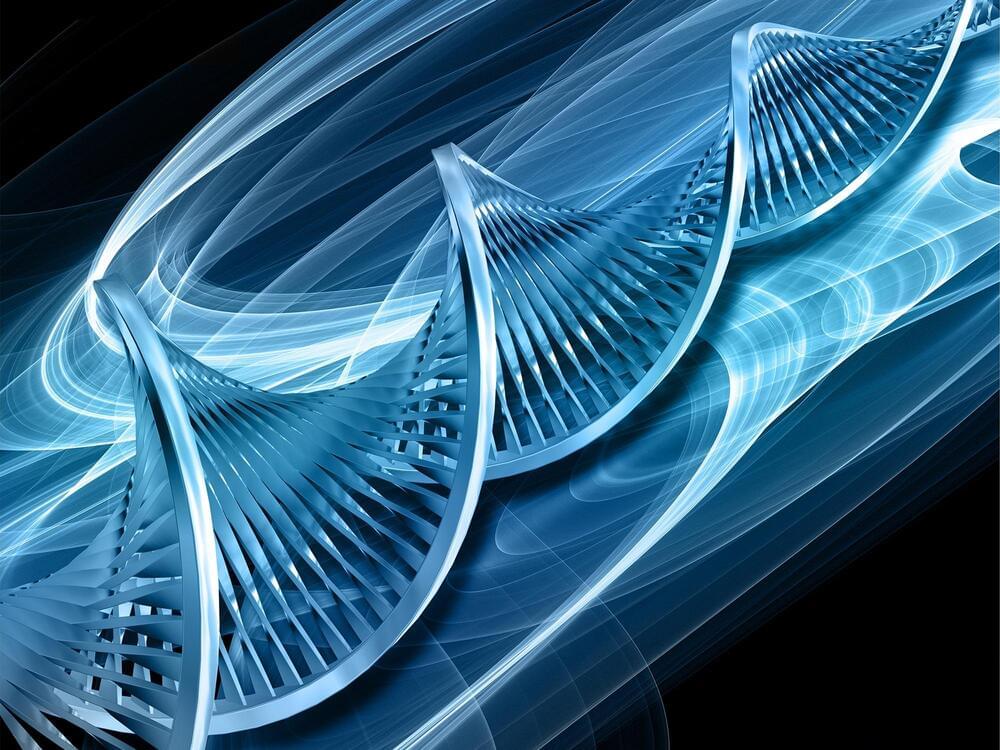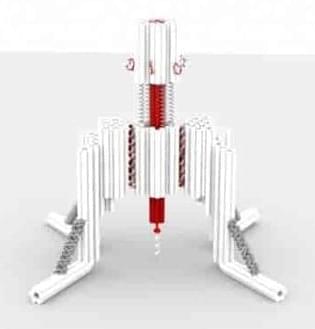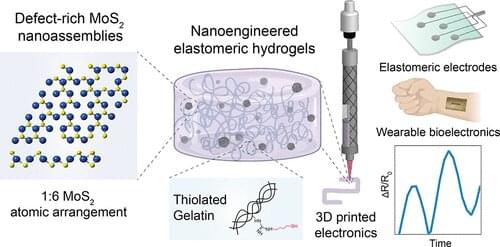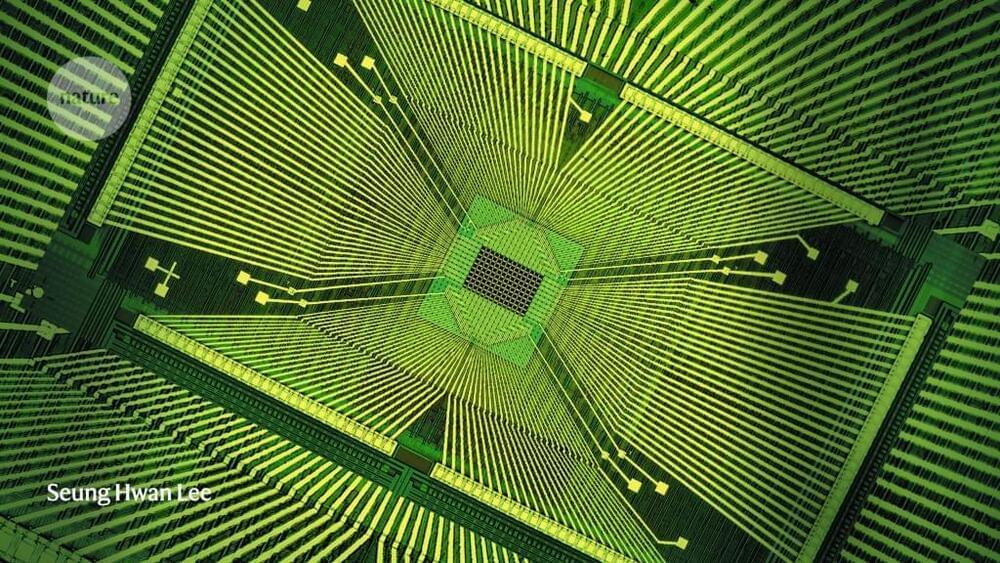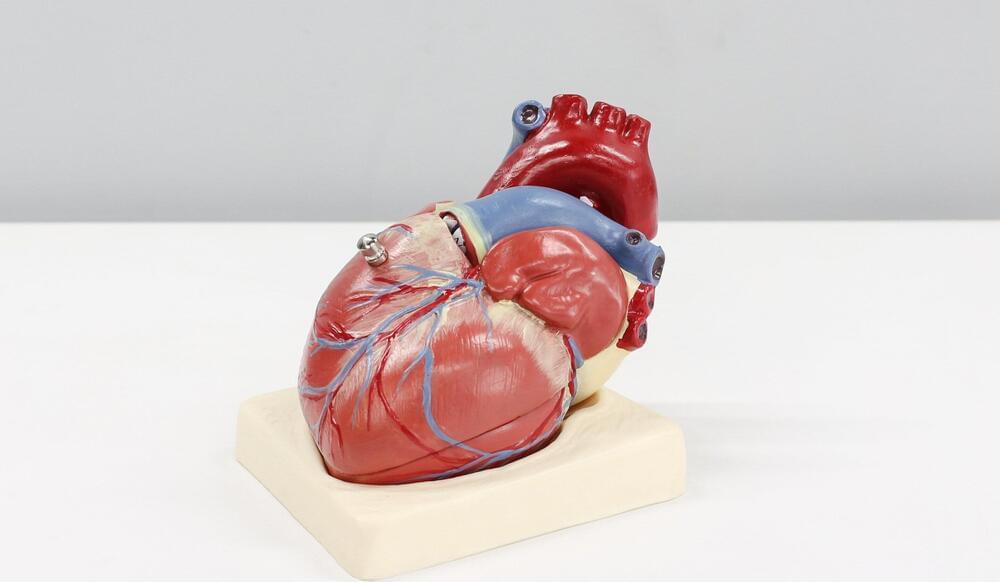Archive for the ‘nanotechnology’ category: Page 126
Aug 23, 2022
Aquabots: Ultrasoft liquid robots for biomedical and environmental applications
Posted by Saúl Morales Rodriguéz in categories: 3D printing, biotech/medical, nanotechnology, robotics/AI
In recent years, roboticists have developed a wide variety of robotic systems with different body structures and capabilities. Most of these robots are either made of hard materials, such as metals, or soft materials, such as silicon and rubbery materials.
Researchers at Hong Kong University (HKU) and Lawrence Berkeley National Laboratory have recently created Aquabots, a new class of soft robots that are predominantly made of liquids. As most biological systems are predominantly made up of water or other aqueous solutions, the new robots, introduced in a paper published in ACS Nano, could have highly valuable biomedical and environmental applications.
“We have been engaged in the development of adaptive interfacial assemblies of materials at the oil-water and water-water interface using nanoparticles and polyelectrolytes,” Ho Cheung (Anderson) Shum, Thomas P. Russell, and Shipei Zhu told TechXplore via email. “Our idea was to assemble the materials that the interface and the assemblies lock in the shapes of the liquids. The shapes are dictated using external forces to generate arbitrary shapes or to use all-liquid 3D printing to be able to spatially organize the assemblies.”
Aug 22, 2022
Innovative “Nano-Robot” Built Entirely From DNA To Explore Microscopic Biological Processes
Posted by Dan Breeden in categories: biotech/medical, genetics, nanotechnology, robotics/AI
Constructing a tiny robot out of DNA
DNA, or deoxyribonucleic acid, is a molecule composed of two long strands of nucleotides that coil around each other to form a double helix. It is the hereditary material in humans and almost all other organisms that carries genetic instructions for development, functioning, growth, and reproduction. Nearly every cell in a person’s body has the same DNA. Most DNA is located in the cell nucleus (where it is called nuclear DNA), but a small amount of DNA can also be found in the mitochondria (where it is called mitochondrial DNA or mtDNA).
Aug 21, 2022
Nanomagnetic Computing Could Drastically Cut AI’s Energy Use
Posted by Quinn Sena in categories: nanotechnology, robotics/AI
The device uses magnetic fields to carry out computation rather than shuttling electricity around, so it consumes far less power.
Aug 20, 2022
Tiny Robot Constructed Entirely From DNA
Posted by Kelvin Dafiaghor in categories: biotech/medical, nanotechnology, robotics/AI
By scientists from Inserm, CNRS, and Université de Montpellier at the Structural Biology Center in Montpellier. The nano-robot could lead to a closer study of the mechanical forces applied at microscopic levels, which are important for various biological and pathological processes.
The study was published in Nature Communications.
Cellular Mechanosensitivity
Aug 19, 2022
Optical Vortex Sizes Up Nanoparticles
Posted by Saúl Morales Rodriguéz in categories: chemistry, nanotechnology, particle physics
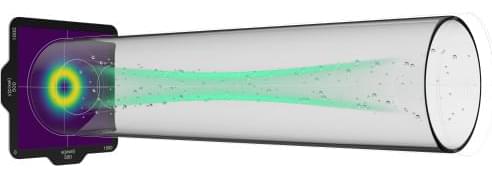
https://youtube.com/watch?v=QfBG3AbW6QA
A novel method for measuring nanoparticle size could have applications in industry and basic materials science research.
Nanoparticles are present in everything from paints to pharmaceutical products. While nanoparticles have many important characteristics, such as molecular composition and shape, it is their size that determines many chemical and physical properties. A new technique relying on an optical vortex—a laser beam whose wave fronts twist around a dark central region—allows researchers to characterize nanoparticle size rapidly and continuously [1]. This light-based size probe might one day find applications in numerous industrial settings and aid fundamental materials science research.
Aug 19, 2022
Scientists design new inks for 3D-printable wearable bioelectronics
Posted by Wise Technology in categories: 3D printing, biotech/medical, chemistry, nanotechnology, wearables
Flexible electronics have enabled the design of sensors, actuators, microfluidics and electronics on flexible, conformal and/or stretchable sublayers for wearable, implantable or ingestible applications. However, these devices have very different mechanical and biological properties when compared to human tissue and thus cannot be integrated with the human body.
A team of researchers at Texas A&M University has developed a new class of biomaterial inks that mimic native characteristics of highly conductive human tissue, much like skin, which are essential for the ink to be used in 3D printing.
This biomaterial ink leverages a new class of 2D nanomaterials known as molybdenum disulfide (MoS2). The thin-layered structure of MoS2 contains defect centers to make it chemically active and, combined with modified gelatin to obtain a flexible hydrogel, comparable to the structure of Jell-O.
Aug 18, 2022
Open-source software enables researchers to visualize nanoscale structures in real time
Posted by Wise Technology in categories: computing, nanotechnology, sustainability, transportation
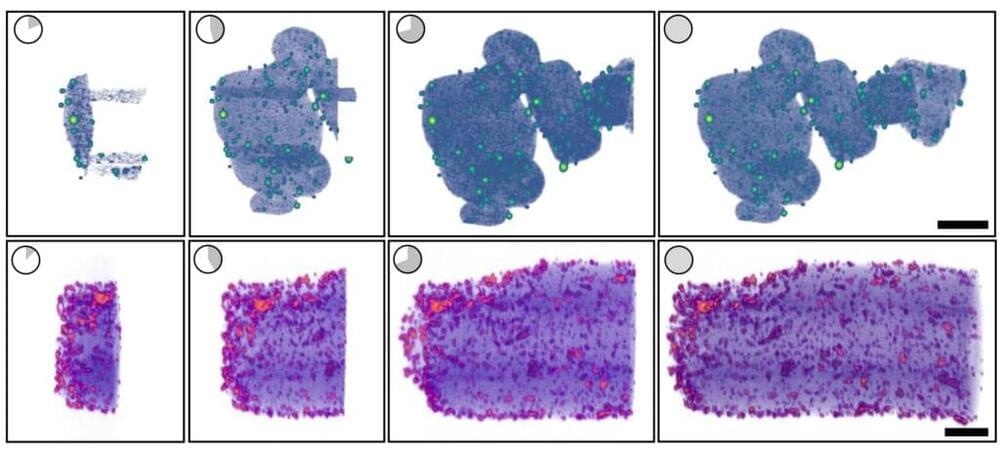
Computer chip designers, materials scientists, biologists and other scientists now have an unprecedented level of access to the world of nanoscale materials thanks to 3D visualization software that connects directly to an electron microscope, enabling researchers to see and manipulate 3D visualizations of nanomaterials in real time.
Developed by a University of Michigan-led team of engineers and software developers, the capabilities are included in a new beta version of tomviz, an open-source 3D data visualization tool that’s already used by tens of thousands of researchers. The new version reinvents the visualization process, making it possible to go from microscope samples to 3D visualizations in minutes instead of days.
Aug 16, 2022
Nanomaterials pave the way for the next computing generation
Posted by Dan Breeden in categories: computing, nanotechnology
Technology on the nanometre scale could provide solutions to move on from the solid-state era.
Aug 16, 2022
Smart nanoparticle shows that intermittent fasting may protect the heart from damage during chemotherapy
Posted by Genevieve Klien in categories: biotech/medical, nanotechnology
Although chemotherapy can be a lifesaving treatment for patients with cancer, some of these medications can damage the heart. A team led by researchers at Massachusetts General Hospital (MGH) recently developed a nanoparticle probe that can detect an indicator of heart damage from chemotherapy.
Experiments with the probe also revealed that in mice with cancer, intermittent fasting before chemotherapy can prevent this heart damage indicator from arising, leading to preserved cardiac function and prolonged survival.
The study, which is published in Nature Biomedical Engineering, focused on autophagy—a process that cells use to remove unnecessary or dysfunctional components. A delicate balance exists between the protective and deleterious effects of this process: reduced levels of autophagy have been implicated in cardiovascular disease and other conditions; however, autophagy can also be a primary mechanism of cell death.
